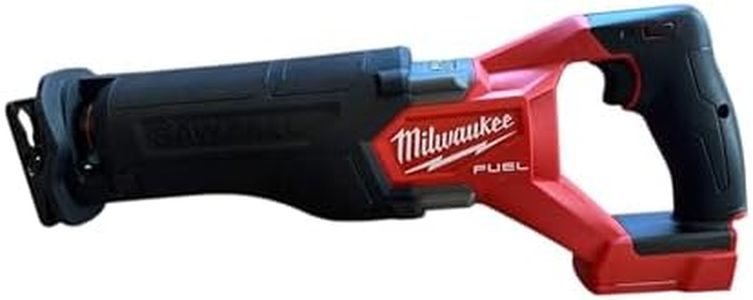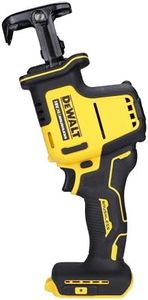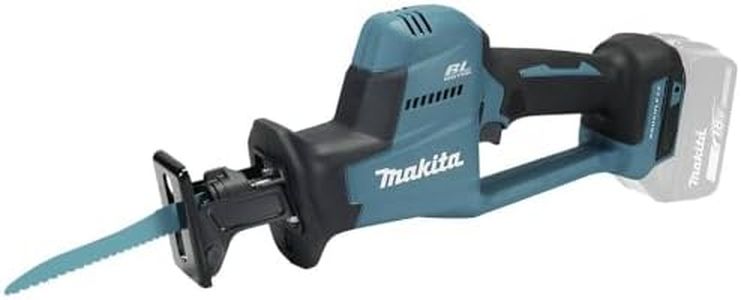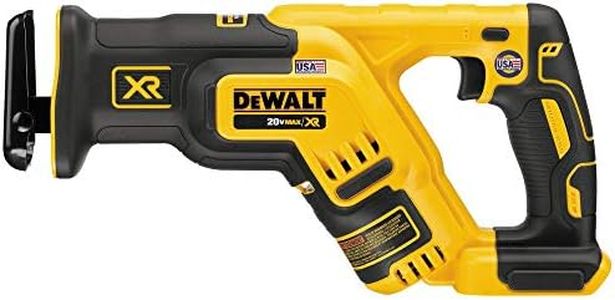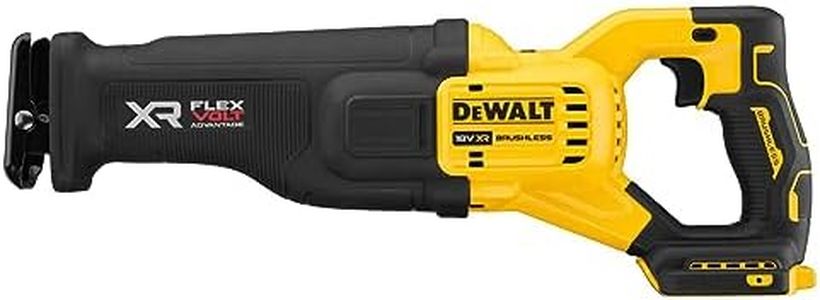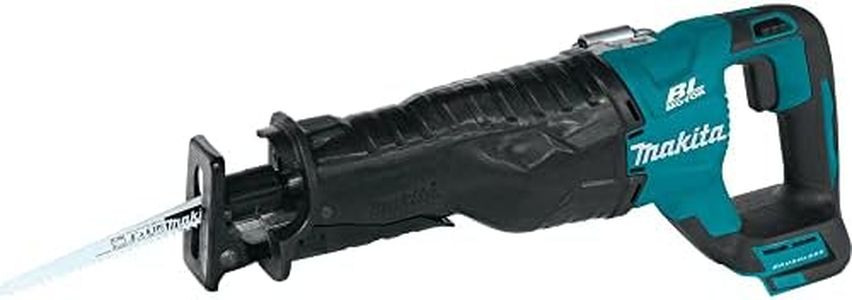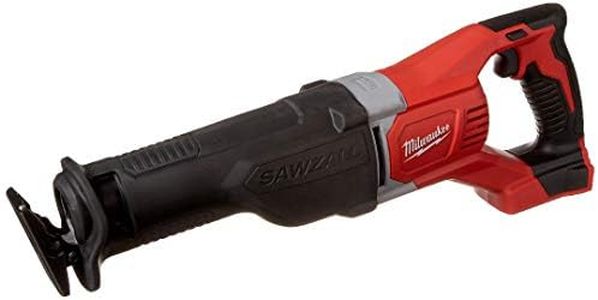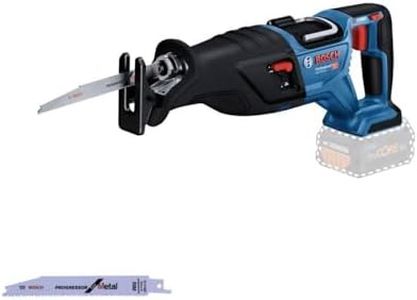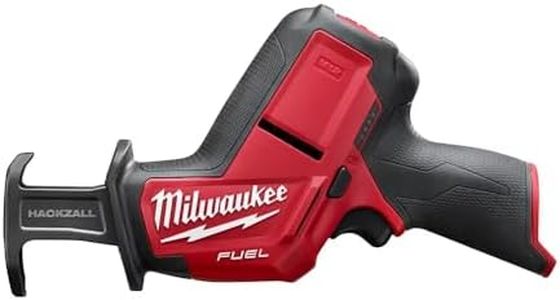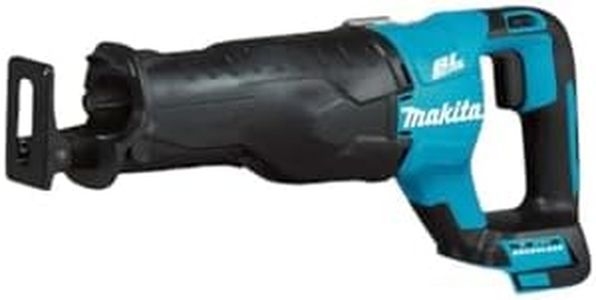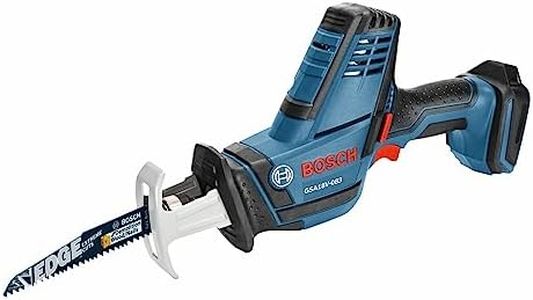We Use CookiesWe use cookies to enhance the security, performance,
functionality and for analytical and promotional activities. By continuing to browse this site you
are agreeing to our privacy policy
10 Best Cordless Reciprocating Saws
From leading brands and best sellers available on the web.By clicking on a link to a third party's website, log data is shared with that third party.
Buying Guide for the Best Cordless Reciprocating Saws
Choosing the right cordless reciprocating saw can make your cutting jobs easier, more efficient, and safer. It's important to understand what makes each model different—things like power, battery life, weight, and stroke characteristics can heavily influence your experience. Before you buy, consider the typical jobs you plan to tackle: demolition, pruning, renovating, or occasional repairs all demand slightly different strengths. Think about how often you'll use it, how tough the materials you'll cut will be, and how long you might need to work without interruption. With these things in mind, you’ll be able to pick a saw that fits your needs and feels right in your hands.Battery VoltageBattery voltage determines how powerful your reciprocating saw can be. Higher voltages generally translate to more power, which is especially helpful for cutting through tougher materials like dense wood or metal. Cordless reciprocating saws typically come in low (10-12V), mid (18-20V), and high (24V and up) voltage ranges. If you plan on using the saw for occasional light tasks, a lower voltage may suffice, keeping the tool lighter and easier to handle. For heavier or more frequent jobs, opt for higher voltage to avoid bogging down during tough cuts. Always match the voltage to the intensity and frequency of your intended use.
Stroke LengthStroke length is the distance the blade moves back and forth with each cycle, usually measured in millimeters or inches. A longer stroke length means each movement removes more material, increasing cutting speed—great for demolition or quick cuts. Shorter strokes are more controlled, suitable for precision or delicate work like cutting pipe close to a wall. Decide which matters more for your jobs: speed or precision, then choose accordingly. Most users find medium stroke lengths balance speed and control well for general home use.
Stroke Speed (SPM)Stroke speed, measured in strokes per minute (SPM), tells you how fast the blade moves. Higher speeds are better for softer materials and rapid cutting, while lower speeds allow for more controlled, deliberate cuts in tougher materials or when cutting metal. Quality saws often offer variable speed controls so you can adjust SPM during use. If versatility is important, look for models that allow you to change the speed, letting you match the saw’s action to each task for better results and safer handling.
WeightThe weight of your cordless reciprocating saw affects both comfort and fatigue, especially for prolonged work or overhead cuts. Lighter saws are easier to handle and maneuver, ideal for tasks like tree pruning or working in tight spaces. Heavier saws tend to have more power and stability, suitable for heavy-duty demolition. Consider how long you’ll hold the saw at a time and in what positions—choose a weight you can easily control for your typical project duration and tasks.
Battery RuntimeBattery runtime tells you how long you can use the saw before needing to recharge the battery. It's often linked to both the size (amp-hour rating) of the battery and the power used by the saw. Longer runtimes are crucial for extended jobs away from outlets, like outdoor projects or renovation scenarios. For brief, occasional use, shorter runtimes may suffice. If you hate interruptions, you'll want a saw with a higher-capacity battery or consider buying a second battery to swap while one charges.
Tool-free Blade ChangeTool-free blade change means you can swap blades quickly without using extra tools, saving time and making the process safer and easier, especially when switching between different material types. This feature is especially important for users who regularly cut a variety of materials or want to avoid hassle mid-project. For occasional users, this may not be a priority, but those who value convenience or anticipate frequent blade swaps should look for this feature.
Adjustable ShoeThe adjustable shoe is the metal piece at the front of the saw that rests against your material. Being able to adjust it helps stabilize your cuts, control depth, and extend blade life by shifting the cutting position. This is particularly useful for angled cuts, odd shapes, or maximizing blade use. If you’re aiming for accuracy or working on irregular surfaces, look for a saw with an easy-to-adjust shoe mechanism.
